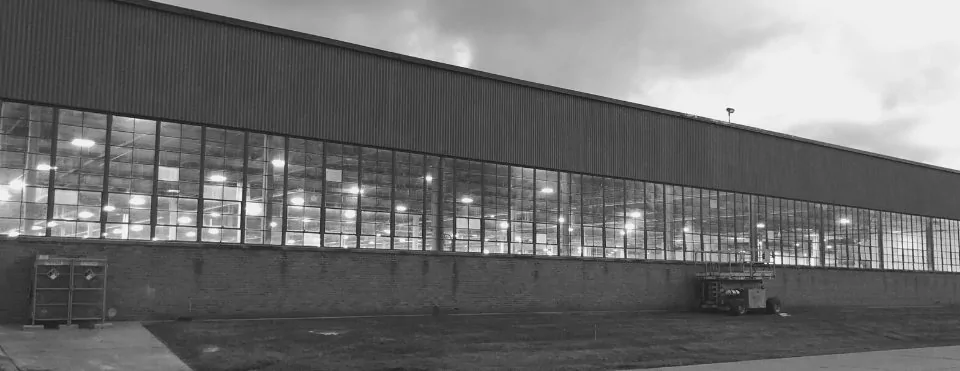The Instant Discounts program is designed to help commercial customers acquire discounted energy efficient projects without jumping through any hoops. This ComEd rebate comes directly off your invoice from the distributor – allowing your team to install and creating a budget friendly replacement option for facilities with their own electrical staff.

Verde Energy Efficiency Experts is proud to be a service provider and distributor in the ComEd Distressed Communities Program. The program is administered by SEDAC (the Smart Energy Design Assistance Center) and geared to helping marginalized communities reduce energy and operating costs through free products and service offerings. The program offers free lighting kits, as well as HVAC tune-ups and optimization for public buildings within these communities.
Buildings may include: Public schools, Libraries, Post Offices, Police Departments, Fire Protection Districts, Municipal Buildings, Park Districts and Public Works and local, state and federal buildings.
Through this program, Verde can provide lighting kits for direct self install, or we can provide both the lighting and the labor to install using our in-house team, which can be quoted separately.
The program stipulations include that the lighting kits provided are installed within a 30 day time frame from the point of delivery. This might be a reasonable time for some organizations, while some others will find this difficult and in need of assistance to get the installations complete. Verde can assist with installations during those times to assure the project is completed in time for Comed inspection.
Besides lowering energy bills, updating outdated lighting to energy efficient LEDs come with the benefits of lower operational costs, improved aesthetics, lower maintenance and improved safety and security.
Most popular in this program is the Type B lamp, which includes an internal driver in the tube and does not require an LED Ballast or External Driver.
Lighting Kit Measures Include:
Additionally, HVAC tune-ups and optimization services are also offered.
Please see this map of distressed communities to see if your community is eligible for these free lighting products to lower energy use.
To learn more about the program, check out this Video.
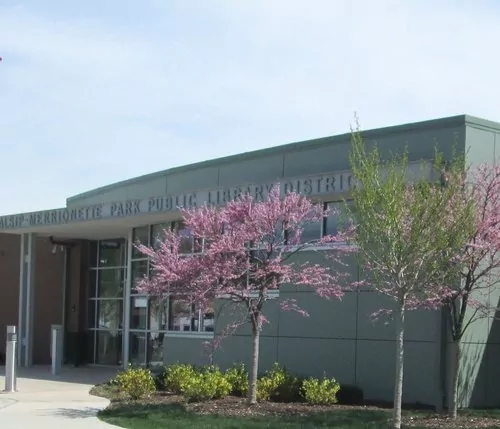
Energy Efficiency for Libraries in 2020
Libraries are part of a healthy community.
Libraries are the hearts of our communities. More than just places to check out books, these hubs are homes to remarkable works of literature, places of gathering, quiet spots to study and learn or work. People come to learn about new ideas, or search for careers, some may even seek respite from the temperatures outside in the summer or winter months. These buildings create homes away from home and are the cornerstones of a healthy community.
The modernization of libraries
Libraries used to be more remote places, but now it’s known that about 25-40% of the population who do not regularly visit libraries, would do so, if they were encouraged. This means libraries are needing to come up with more relevant programming and increase their budgets to market to these consumers to make them aware of these offerings. Marketing costs more money. The production of better websites, newsletters, managing social media, and public relations all add to the costs of running a modern library to meet today’s needs.
Libraries are heavy energy users.
Libraries keep long hours. In some cases, many university libraries can operate 24 hours a day to accommodate students needing to study. Library buildings are large, but new libraries are being built larger than ever to accommodate more functionality like adding community gathering spaces, gaming areas, more tech and added volumes of publications. Between the long hours and the large square footage demands, energy use must be taken into consideration.
Lighting is of obvious importance for reading, but inefficient, outdated lighting can mean higher operational costs. Libraries can lower energy costs by retrofitting older lighting to LED, making spaces brighter, and more comfortable for staff and patrons. New products like, Philips Evokits offer cleaner, brighter lights and added sensors harvest available sunlight through windows to adjust light outputs, which saves even more costs. In addition to saving costs on energy, the longevity of LEDs means less labor costs for replacing ballasts and bulbs, and less interruption to the day.
Lowering operational costs
When it comes to carving up the budget, energy efficiency is an area where payback is quick.
With the local utilities promoting lowering kWhs with incentives for libraries through their small public facilities and standard public facilities program, investing in better lighting is a good place to start. Approx 17% of the libraries operational costs come from lighting, and with the incentives over .50 per kWh reduced, cost reduction is within quick reach.
HVAC systems are also a huge source of energy usage, with lots of opportunities for improvement in most public libraries. Verde encourages our clients to install CEE Tier 2 energy efficiency equipment, which is the top 25% efficient equipment on the marketplace. If you go about your normal procurement process, you likely will purchase less efficient equipment than Tier 2.
In addition, we encourage libraries to take advantage of demand control ventilation in their new equipment. In addition to using an economizer to bring in free cooling on days that is available, demand control ventilation uses a CO2 sensor to only bring in outside fresh air when it is called for. Without this approach, your building likely brings in 15% to 20% fresh air based on your local code, which can really waste energy on extremely hot and cold days.
Case Study: Alsip Merrionette Library
Alsip-Merrionette Park Library has been taking advantage of the benefits of retrofitting to LEDs with lower costs, and headaches. With a savings estimate of over $9,000 per year in energy, the library also enjoys less dark spots, a safer, brighter parking lot and less distracting buzzing ballasts over head. Ken Jankowski, who leads the charge in library maintenance, used to spend hours replacing burnt out bulbs per week. Now Ken spends less time changing lights, and has more time to get the library ready for a day of business each morning. Watch how Alsip-Merrionette Park Library worked with Verde Energy Efficiency Experts to lower their energy and create a brighter space.
Sustainability is a Library Core Value
Beyond day to day operations, libraries see sustainability as the healthy and right thing to do for the community. Protectors of books, and the earth, libraries have been met with political and socio-economic challenges past and present and no longer feel that they can be passive in the fight to protect our world. In order for libraries to continue to exist, they must be stewards of sustainability. In 2015, the ALA made a stand and passed a resolution on the importance of sustainability for libraries, noting that libraries play an integral part of resilience in terms of climate change and creating a sustainable future for the community and that this should be kept in mind when making decisions on every aspect, from facilities to programing.
Libraries are Blue Chip Clients
We seek to work with clients that culturally align with our own core values. Verde Energy Efficiency is more than a lighting distributor. We’re more than a lighting contractor, we’re more than a for profit business. Verde is an L3C meaning that we are a low profit, limited liability company with its revenue earnings directly tied to solving a social problem. Verde works only within the Chicagoland area, serving communities we ourselves live in. These libraries are our libraries and we understand their importance of being here for years to come. Over the last year, Verde worked with Carver Peterson, a sales consultant group in the business of helping organizations grow, to identify clients that were our “blue chips”. Blue chips were identified after careful analysis of our current and future objectives. Through that work, libraries were noted as being one of the top aligned verticals for us to work in. Verde works hard to keep our money here in our communities, sourcing as much of our products made in IL as possible, and working with slim margins with the mission to reduce energy here in our home state of Illinois.
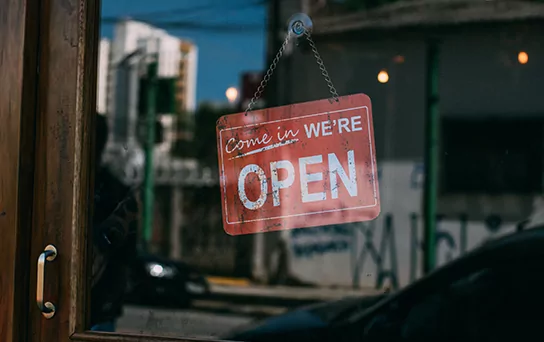
If you own and operate a business in Chicagoland, you likely fall into the Small Business Energy Efficiency Program, small business grants or rebates as a benefit that is available to all commercial customers. This program is one slice of the greater ComEd Energy Efficiency Program in Illinois and is designed to help businesses move forward with efficiency improvements through rebates and incentives.
First – why would ComEd share rebates with businesses to help them use less energy? Isn’t that against their business model since they get paid for the electricity we use? While that is true that ComEd benefits from the greater amount of electricity that we use financially, they are also required by the Future Energy Jobs Act law to spend a significant amount of money annually on energy efficiency. Since 2007, Illinois has been collecting a tax on each residential, commercial, and public sector’s electric bill and spending that on energy efficiency.
ComEd, like most utilities, differentiates commercial customers by the amount of electricity drawn at any one instant. Unlike a kWh (kilowatt-hour), they do this by kW (kilowatt). I imagine this helps them stabilize the grid by understanding how many businesses are drawing large amounts of power at any instant, although this classification may have less importance today with the advent of the smart meter.
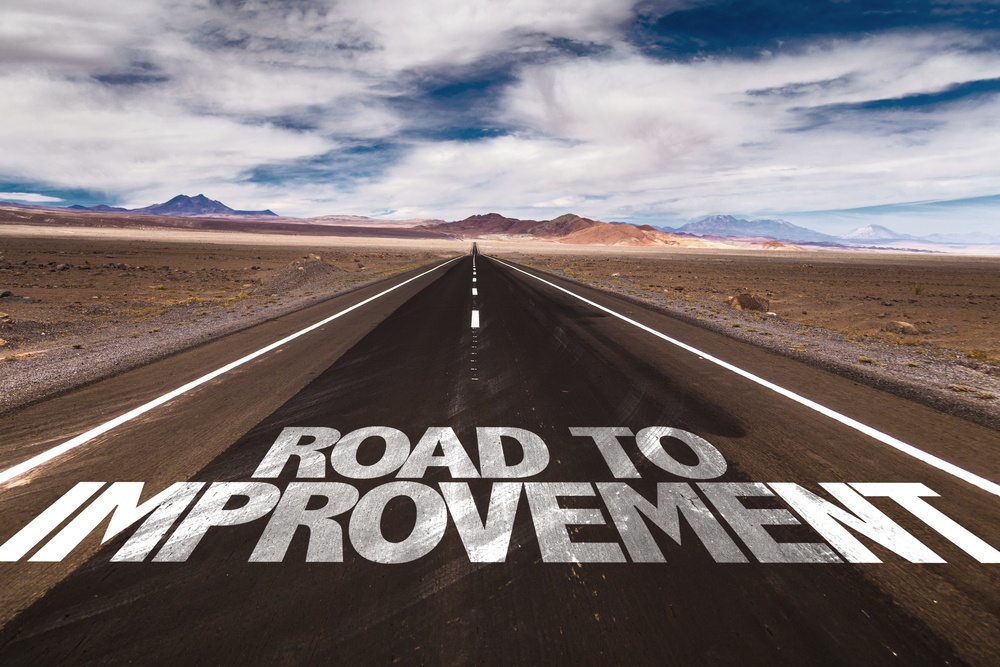
This program has been designed to really encourage businesses to move forward with energy efficiency, with very generous incentives. I like to think of it as designed for organizations that do not have a person dedicated to evaluating investments to see if they make sense to move forward.
Target and Walmart likely has a whole team dedicated to evaluating LED lighting for their parking lots, stores, and thinking about how that investment can benefit the company. A small business does not – it usually has an owner that is stretched thin and makes most decisions. With large incentives that cover huge portions of the cost, it can make moving forward with energy efficiency a “no-brainer”.
The core offering of this program is a $.80 per watt reduced incentive on LED conversions. For example, a 4 lamp 4 ft T12 troffer is considered to have 164 watts in energy usage. If you install a 36 watt LED fixtures in its place, your incentive would be 164 – 36 = 128 * $.70 per watt reduced = $89.6 of incentive. Outdoor lighting rebates are actually stronger, at $.80 per watt reduced on LED conversions. In addition, they offer incentives on occupancy sensors, photocells, and advanced lighting controls.
However, once you get past lighting, the program actually gets more interesting.
Refrigeration is a common energy hog for restaurants. The program incentivizes EC motor upgrades, as well as evaporative fan speed controls – which only make that fan run when the evaporative cooler is calling for cooling. This can combine to improve the efficiency on a shaded pole motor by 90%.
HVAC incentives are also very popular in this program, and there are incentives of up to $400 per ton to encourage folks to take their current rooftop HVAC unit and upgrade to a CEE tier 2 energy efficiency RTU. Since our most commonly replaced units are 10 tons, that is $6,000 on incentive.
A few products can be provided to the customer at no cost, and those are the following:
If you have not participated in this program before, it might be because it sounds too good to be true. Well, as an active trade ally for the past 5 years – I can assure you that it is true. In fact, I can assure you that your neighboring businesses have participated and even your competitors. Yes – your competitors might be using less electricity and having a competitive advantage over you!
One caveat – this program is run through a closed network of trade allies. You must work with one of these highly trained partners in order to receive these very generous incentives.
How do you find one of those partners? You already have – just give us a call at (773) 413-9587, or click the link below.
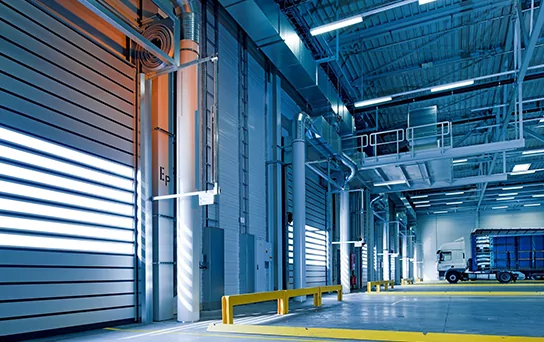
Commercial energy efficiency improvements are a core pillar of the ComEd Energy Efficiency Program in Illinois. All businesses and public sector programs are available to participate in the Standard Program for energy efficiency program.
While businesses that are rated 0-200 kW are eligible for their own programs for small business and small facilities public sector, they are also able to participate in the standard program for business energy efficiency if they prefer.
The Standard program is very versatile and does not require the usage of an ICC Certified Trade Ally to install the product. However, it might be helpful to purchase your products through an Instant Discount distributor such as Verde Energy Efficiency Experts to make sure the products you are installing are Design Light Consortium approved, as are often required for the incentives.
This program’s incentives, while lower than those targeting smaller facilities, are targeted toward larger facilities that often have a dedicated person to maintain supervision and staff on hand to replace lighting fixtures and advanced controls.
2021 Highlights of the Program include:
Lighting
- $.50 per watt reduced incentives for LED lighting, including Type C Tube and Driver installation
- $ .18 per watt controlled daylighting plus occupancy controlled sensors
- Made in Illinois bonus of 20% on any fixture that is at least 50% manufactured and/or assembled in Illinois
- Opportunities for higher incentives for advanced lighting controls scenarios
Refrigeration
- $4 incentive per square foot walk-in cooler and freezer strip curtains
- $60 incentive per EC Motor installed in walk-in cooler and freezers
- $90 incentive per EC Motor installed with evaporative fan speed controls for walk-in cooler and freezers
- $100 incentive per beverage machine controls
HVAC
- $50 per ton of new rooftop HVAC unit installed
- $50 per ton controlled of economizer installed
- $10 per bathroom exhaust fan sensor installed
- $40-$75 per HP controlled Variable Speed Fan
Compressed Air
- $20 incentive per high-efficiency air nozzle
- $100 incentive per no loss condensate drain
- $75 per HP – Integrated VSD on a new air compressor
Want to know your specific eligibility and where you can save energy? Hit us up and schedule a free energy efficiency walkthrough, which will share a customized report with all of your eligible ComEd rebates.

Public Sector energy efficiency improvements are a core pillar of the ComEd Energy Efficiency Program in Illinois. All businesses and public sector programs are available to participate in the Standard Program for energy efficiency program.
While buildings that are rated 0-100 kW are eligible for their own programs for small business and small facilities public sector, they are also able to participate in the standard program for business energy efficiency if they prefer.
Public sector opportunities include:
- Fire Stations
- Libraries
- Police Stations
- Public Work Buildings
- Municipal Buildings
- Schools
- Mosquito Abatement District facilities
The Standard program is very versatile and does not require the usage of an ICC Certified Trade Ally to install the product. However, it might be helpful to purchase your products through an Instant Discount distributor such as Verde Energy Efficiency Experts to make sure the products you are installing are Design Light Consortium approved, as are often required for the incentives.
This program’s incentives, while lower than those targeting smaller facilities, are targeted toward larger facilities that often have a dedicated person to maintain supervision and staff on hand to replace lighting fixtures and advanced controls.
2020 Highlights of the Program include:
Lighting
- $.50 per watt reduced incentives for LED lighting, including Type C Tube and Driver installation
- $ .18 per watt controlled daylighting plus occupancy controlled sensors
- Made in Illinois bonus of 10% on any fixture that is at least 50% manufactured and/or assembled in Illinois
- Opportunities for higher incentives for advanced lighting controls scenarios
Refrigeration
- $4 incentive per square foot walk-in cooler and freezer strip curtains
- $60 incentive per EC Motor installed in walk-in cooler and freezers
- $90 incentive per EC Motor installed with evaporative fan speed controls for walk-in cooler and freezers
- $100 incentive per beverage machine controls
HVAC
- $50 per ton of new rooftop HVAC unit installed
- $50 per ton controlled of economizer installed
- $10 per bathroom exhaust fan sensor installed
- $40-$75 per HP controlled Variable Speed Fan
Compressed Air
- $20 incentive per high-efficiency air nozzle
- $100 incentive per no loss condensate drain
- $75 per HP – Integrated VSD on a new air compressor
Want to know your specific eligibility and where you can save energy? Hit us up and schedule a free energy efficiency walkthrough, which will share a customized report with all of your eligible ComEd rebates.
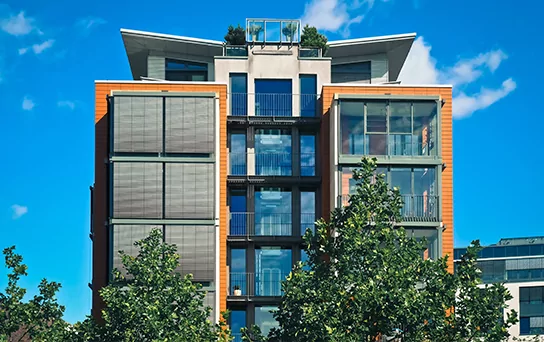
In 2017, Franklin Energy administers the pilot “Multi-family Energy Savings Program” to focus on reducing energy in the Multi-family building space in Chicagoland. This program is one of the rare partnerships between electric (ComEd) and gas companies (People’s Gas and North Shore Gas) in Chicagoland, and is an important pillar of the ComEd Energy Efficiency Program. Due to the overwhelming success of the multifamily energy efficiency pilot program among property managers, Trade Allies, and proven energy savings, this program is back for 2018 and expanded in scale and impact.
According to the American Council for an Energy-Efficient Economy (ACEEE), comprehensive, cost-effective upgrades in multifamily buildings can improve efficiency by 15-30% , representing an annual sector-wide savings of almost $3.4 billion.
The Multi-Family Program is broken into two categories – market rate and Income Eligible. For this comprehensive program to work, the program must have access to within the units for the entire building to upgrade. Need some help from one of our energy efficiency analysts to help engage your building – hit us up!
Market Rate Multi-Family Program
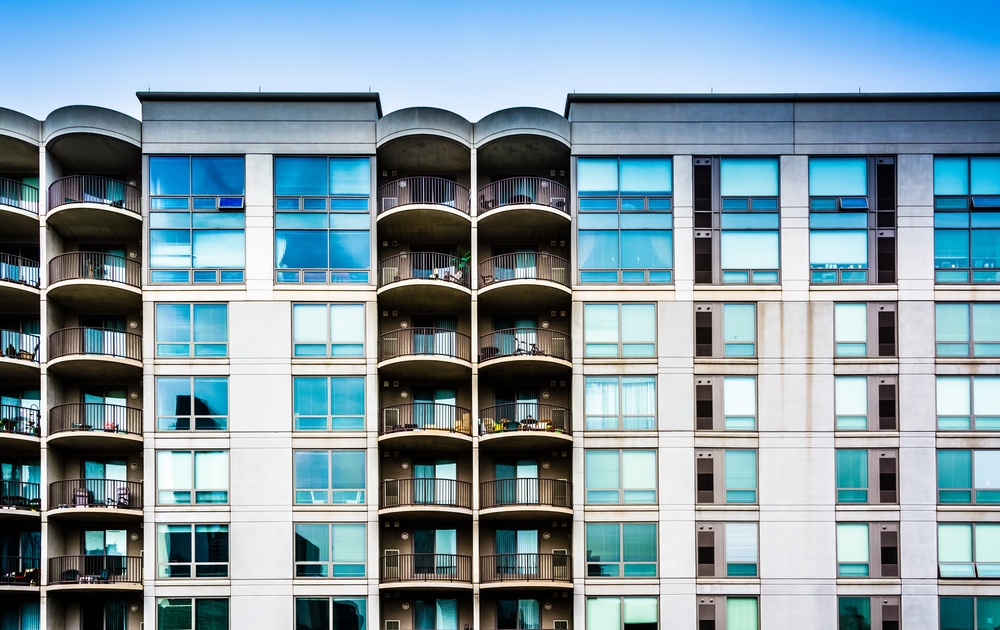
Income Eligible
Income eligible, or low-income, are multi-family buildings that serve tenants that are low income. These buildings are not necessarily located in a certain geography, but instead have a focus on providing subsidized rent or services specifically for low income populations in Chicagoland. Property owners or managers are the best contacts for this, and we partner with Elevate Energy to deliver this ComEd rebate.
Program Specifics
This program combines energy efficiency improvements in the common areas of multi-family buildings with the opportunities available in the apartments or condominiums in the building and may include:>
In-Unit Offerings
- ENERGY STAR® certified LEDs
- Advanced power strip
- Programmable thermostats
- WaterSense® certified shower heads
- Faucet aerators for bathrooms and kitchens
- Hot water pipe insulation
Common Area Offerings
- ENERGY STAR® certified LEDs
- TLED lighting
- Exterior and garage LEDs
- Programmable thermostats
- LED exit signs
- Occupancy sensors
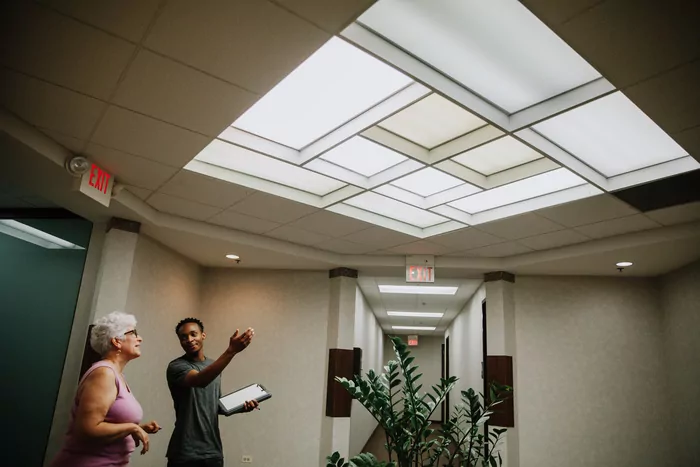
Non profits and Houses of Worship make up about 20% of our client work. We find not only are these projects culturally aligned with our company, but they also have large opportunities for energy kWh savings.
NPO Offering
New to the Comed Energy Efficiency Program, the NPO program offers deep incentives for clients from any size. This program is new, but tailored to the needs of non profits.
SBO Offering
Many of our smaller sized clients fall into this program, tailored to 0-100kW usage (on your Comed bill) buildings. We have found that houses of worship with low usage in terms of hours are not great candidates for expensive LED conversions. However, those that use much of their building for community usage (schools, classes, etc) are great candidates for energy efficiency work.
In addition, we do occasionally take projects into special consideration for our Light the Way grant program.
Low-Income Energy Efficiency Program
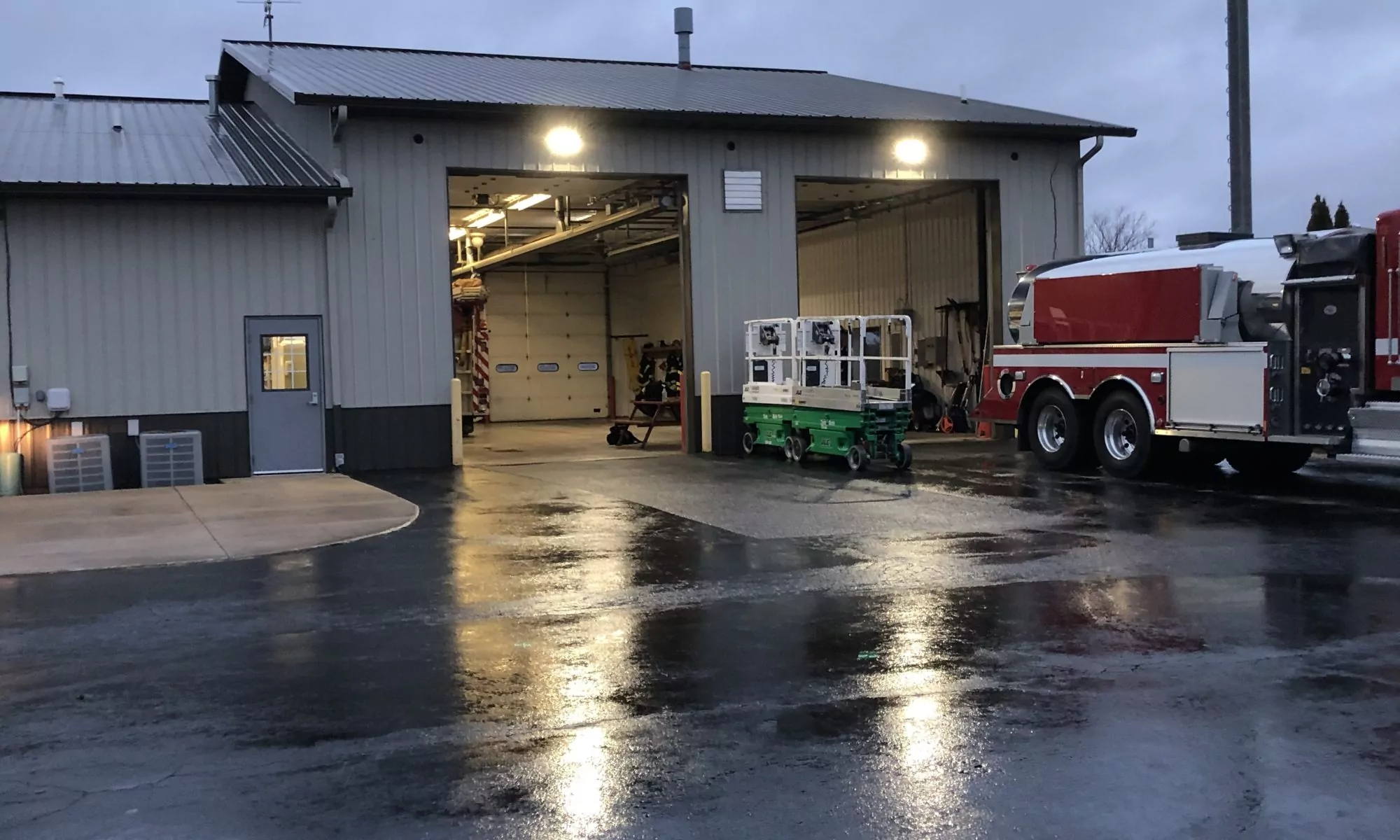
If you get a chance to read through the breakthrough Future Energy Jobs Act, which is the funding and baseline for the ComEd Energy Efficiency Program, you will find that the state of Illinois is committed to supporting Low Income Energy Efficiency program improvements.
In general, lower income populations, both commercial and residential, pay more as a percentage of their income for electricity usage. This makes sense since electricity in your home or business is a necessary evil – and just keeping the lights on cost some basic level of funding. Those with less money will likely pay a greater percentage for this baseline since their overall income is lower.
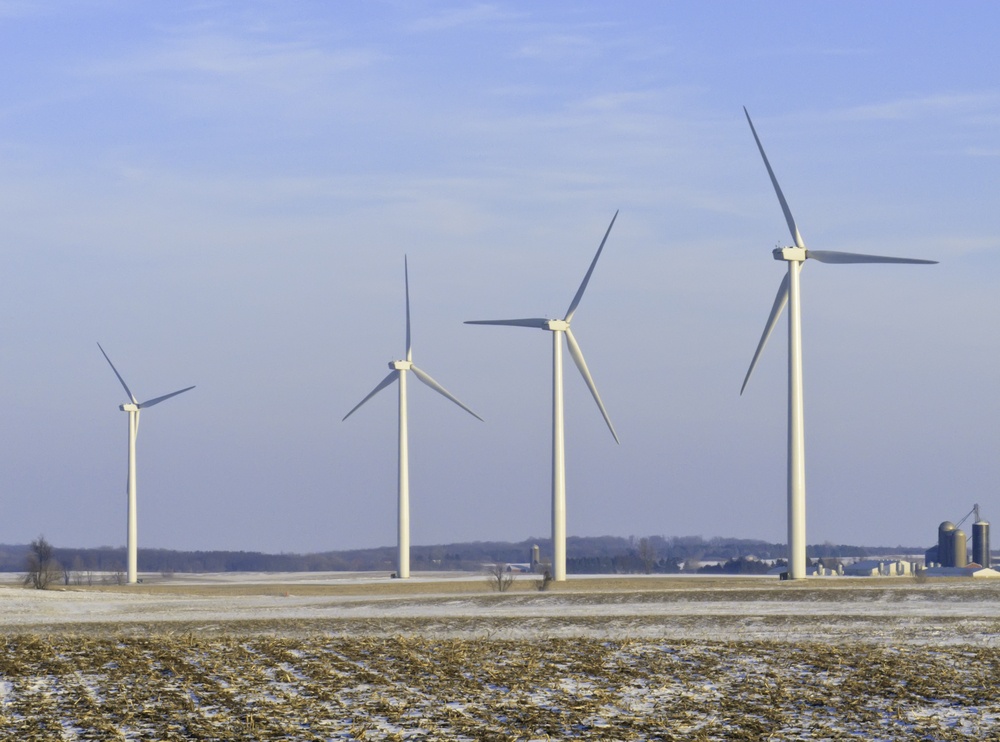
Multifamily Low-Income Projects
Multifamily projects are a great place for energy efficiency projects as they often contain a great deal of 24-hour lighting on the inside, and exterior security lighting on the outside. We love doing work for long operating hour locations for two reasons.
First, the long hours mean that the Return on Investment for any capital improvement is faster. If you reduce 100 watts and it costs a set amount of money – that payback will be faster the longer it is used. 24-hour operations in the common area can make paybacks 3-4 times faster a normal commercial space and make energy efficiency project very cost effective.
Second, the long operating hours also mean that the energy savings will be greater. This might seem redundant to the first point, but it is different. Verde believes in what we do, that reducing energy is important for our collective society to be undertaking. If we have the opportunity to work with a business and reduce 100W or 1000W, we get more excited about the latter. That’s just who we are.
Low-Income Businesses and Nonprofits
Low-income businesses and nonprofits in Chicago are often doing important community building in Chicagoland. We love reducing their energy, so they can do more of what they are doing for the community. Whether they are providing fresh fruits and vegetables to a neighborhood as a for-profit or helping connect kids to after-school programs – we are all stronger when they are spending more of their money on products and programming than electricity.
Churches
For the past 6 years, Verde Energy Efficiency Experts (previously known as Verde Sustainable Solutions) has worked with several hundred churches. There is a natural synergy with working with community places of worship, as they tend to (in general) believe in protecting the environment. They also understand that there is a lot of money available and that you often just have to be in the right place at the right time.
Unfortunately, churches often have low operating hours when they are stand-alone religious buildings. Often, we see a combination of schools, soup kitchens, or other community building and our combined effort on energy efficiency is deeper.
2020 Updates on Low Income Energy Efficiency
There is a new program for distressed public sector communities – the Distressed Community by Comed. This program focuses on utilizing labor available in towns, and provides free distribution of LED products. Ask the program, or reach out to Verde, to see if your community falls into the zip codes eligible for this program.
Multi-Family Energy Efficiency
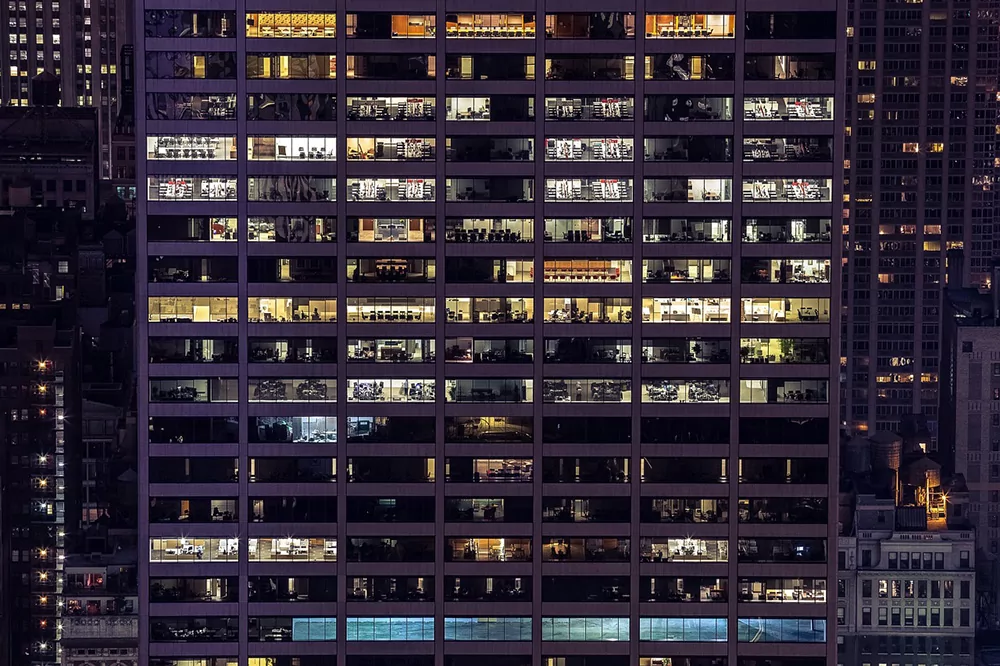
In 2017, Franklin Energy administers the pilot “Multi-family Energy Savings Program” to focus on reducing energy in the Multi-family building space in Chicagoland. This program is one of the rare partnerships between electric (ComEd) and gas companies (People’s Gas and North Shore Gas) in Chicagoland, and is an important pillar of the ComEd Energy Efficiency Program. Due to the overwhelming success of the multifamily energy efficiency pilot program among property managers, Trade Allies, and proven energy savings, this program is back for 2018 and expanded in scale and impact.
According to the American Council for an Energy-Efficient Economy (ACEEE), comprehensive, cost-effective upgrades in multifamily buildings can improve efficiency by 15-30% , representing an annual sector-wide savings of almost $3.4 billion.

Market Rate Multi-Family Program
Market Rate applies to any building that is non specifically subsidizing low-income residents. This would include all condominium buildings, as well as apartments that are market rate for their tenants. Often, the property manager or a condo board member is the right person to contact Verde about this program.
Income Eligible
Income eligible, or low-income, are multi-family buildings that serve tenants that are low income. These buildings are not necessarily located in a certain geography, but instead have a focus on providing subsidized rent or services specifically for low income populations in Chicagoland. Property owners or managers are the best contacts for this, and we partner with Elevate Energy to deliver this ComEd rebate.
Program Specifics
This program combines energy efficiency improvements in the common areas of multi-family buildings with the opportunities available in the apartments or condominiums in the building and may include:>
In-Unit Offerings
- ENERGY STAR® certified LEDs
- Advanced power strip
- Programmable thermostats
- WaterSense® certified shower heads
- Faucet aerators for bathrooms and kitchens
- Hot water pipe insulation
Common Area Offerings
- ENERGY STAR® certified LEDs
- TLED lighting
- Exterior and garage LEDs
- Programmable thermostats
- LED exit signs
- Occupancy sensors
2020 Program Updates
In 2020, there is a copay for T8 to LED conversations that are Type C. This is important, since this program frequently was oversubscribed and not available year round. There are times that a Type A (instant discount) offering would make more sense than a Type C, so get a free energy efficiency assessment to determine your best offering.
Small Business Grants in the Form of Rebates
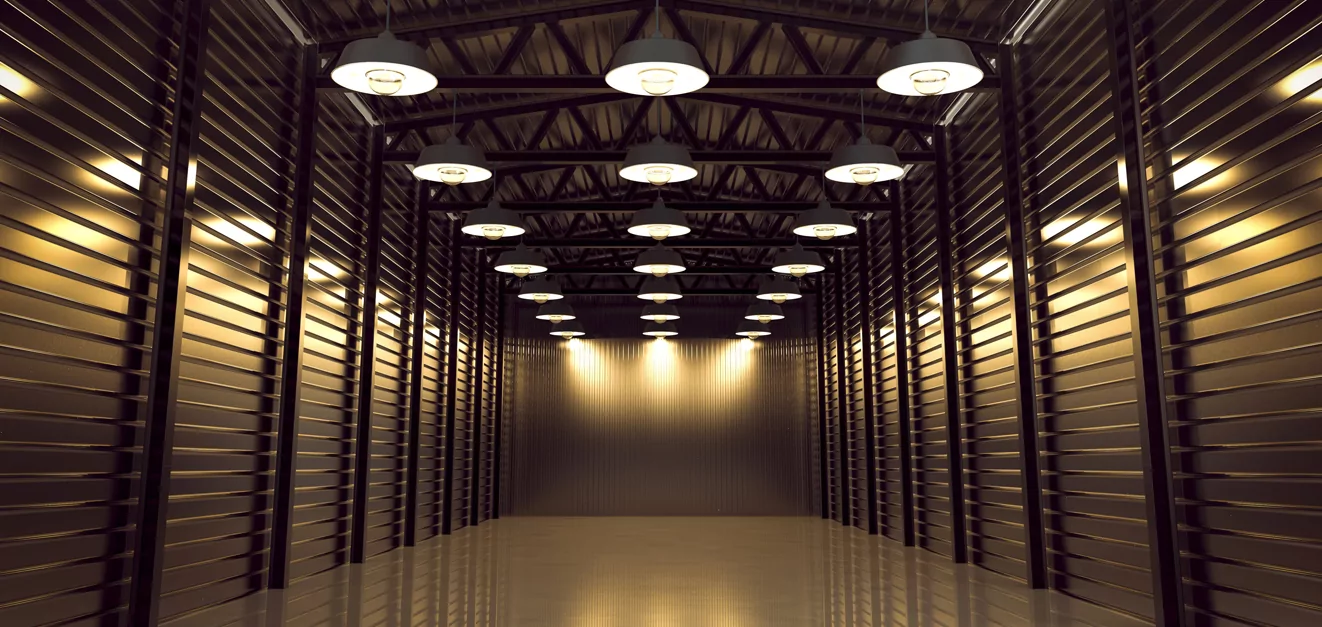
If you own and operate a business in Chicagoland, you likely fall into the Small Business Energy Efficiency Program, small business grants or rebates as a benefit that is available to all commercial customers. This program is one slice of the greater ComEd Energy Efficiency Program
in Illinois and is designed to help businesses move forward with efficiency improvements through rebates and incentives.
First – why would ComEd share rebates with businesses to help them use less energy? Isn’t that against their business model since they get paid for the electricity we use? While that is true that ComEd benefits from the greater amount of electricity that we use financially, they are also required by the Future Energy Jobs Act law to spend a significant amount of money annually on energy efficiency. Since 2007, Illinois has been collecting a tax on each residential, commercial, and public sector’s electric bill and spending that on energy efficiency.

For commercial customers that are classified as Small Business (0-100 kW), they are eligible for the Small Business Energy Savings Program. Since this classification is about how much energy is drawn, and not how much revenue is earned – this can lead to very large businesses qualifying for this program (so the name can be misleading). Here is a list of likely candidates that will qualify for the 0-100 kW classification, but the only way to really know is to check on your utility bill.
This program has been designed to really encourage businesses to move forward with energy efficiency, with very generous incentives. I like to think of it as designed for organizations that do not have a person dedicated to evaluating investments to see if they make sense to move forward.
Target and Walmart likely has a whole team dedicated to evaluating LED lighting for their parking lots, stores, and thinking about how that investment can benefit the company. A small business does not – it usually has an owner that is stretched thin and makes most decisions. With large incentives that cover huge portions of the cost, it can make moving forward with energy efficiency a “no-brainer”.
The core offering of this program is a $.85 per watt reduced incentive on LED conversions.For example, a 4 lamp 4 ft T12 troffer is considered to have 164 watts in energy usage. If you install a 36 watt LED fixtures in its place, your incentive would be 164 – 36 = 128 * $.85 per watt reduced = $108.80 of incentive. In addition, they offer incentives on occupancy sensors, photocells, and advanced lighting controls. In fact, Evokits are the most popular product we install and include an additional $75 per fixture for daylight harvesting and occupancy sensors.
However, once you get past lighting, the program actually gets more interesting.
Refrigeration
Refrigeration is a common energy hog for restaurants. The program incentivizes EC motor upgrades, as well as evaporative fan speed controls – which only make that fan run when the evaporative cooler is calling for cooling. This can combine to improve the efficiency on a shaded pole motor by 90%.
HVAC Incentives
HVAC incentives are also very popular in this program, and there are incentives of up to $400 per ton to encourage folks to take their current rooftop HVAC unit and upgrade to a CEE tier 2 energy efficiency RTU. Since our most commonly replaced units are 10 tons, that is $4,000 on incentive. When you combine this with a DCV Economizer and Advanced Rooftop Controls, it can cover almost 50% of the new unit replacement.
A few products can be provided to the customer at no cost, and those are the following:
If you have not participated in this program before, it might be because it sounds too good to be true. Well, as an active trade ally for the past 5 years – I can assure you that it is true. In fact, I can assure you that your neighboring businesses have participated and even your competitors. Yes – your competitors might be using less electricity and having a competitive advantage over you!
One caveat – this program is run through a closed network of trade allies. You must work with one of these highly trained partners in order to receive these very generous incentives.
How do you find one of those partners? You already have – just give us a call.
ICC Certification – Energy Efficiency Measures Installer
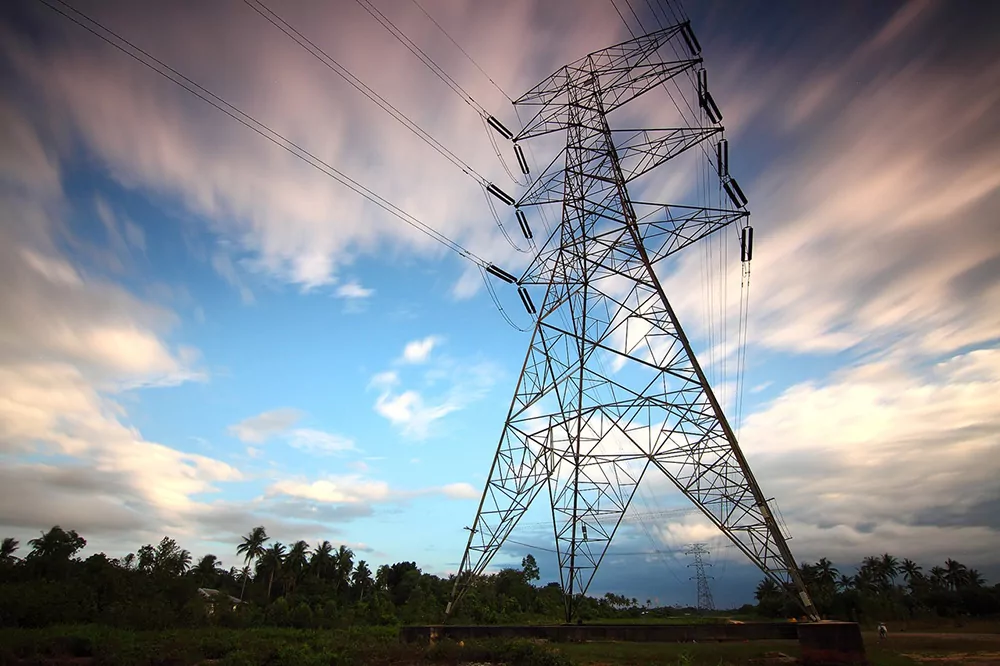
In 2016, Illinois passed an ambitious piece of legislation called commonly as the Future Energy Jobs Act that aggressively expanded the ComEd Energy Efficiency Program. This act recently went into place in Illinois in January 2018, and with it comes a new certification for energy efficiency companies in Illinois.
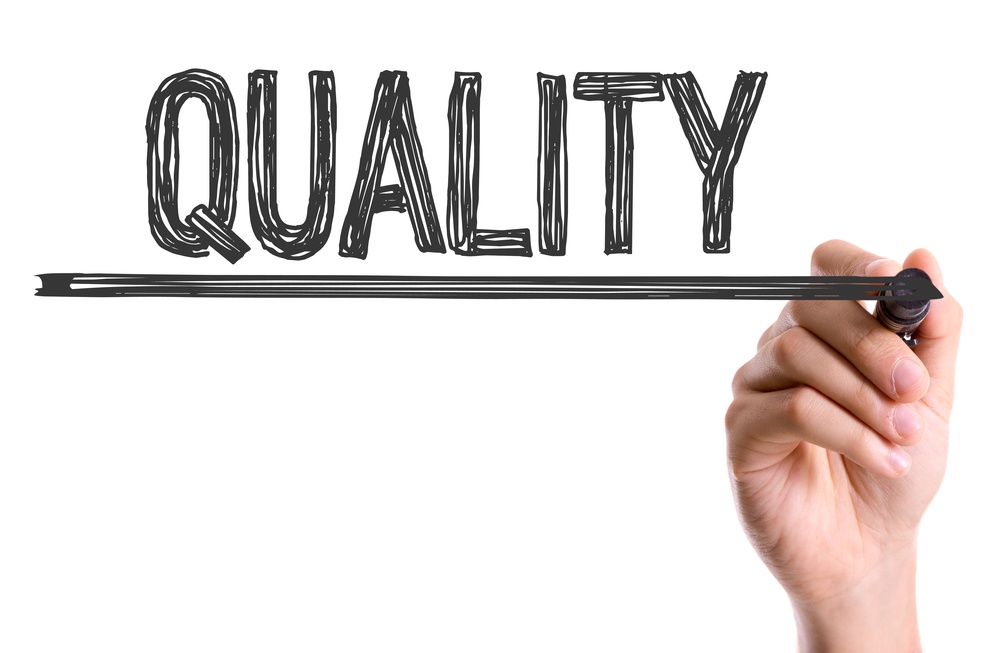
This certification is the responsibility of Program Implementers of ComEd, such as Nexant, DNV GL, Willdan and Franklin Energy to assure. While not the responsibility of the commercial customer or public sector customer receiving a rebate check, it is a good idea to check certification before getting started with your Trade Ally.
You can check your current Trade Ally on the ICC Website, or reach out to Verde Energy Efficiency Experts – as we were one of the first Illinois companies to get certified.
2020 Update – Comed and the energy efficiency community now refer to Trade Allies as “Service Providers”. So keep that in mind as you navigate this space, or reach out to your favorite Service Provider or Trade Ally – Us!
Instant Discounts – Easiest Energy Rebate Program Around
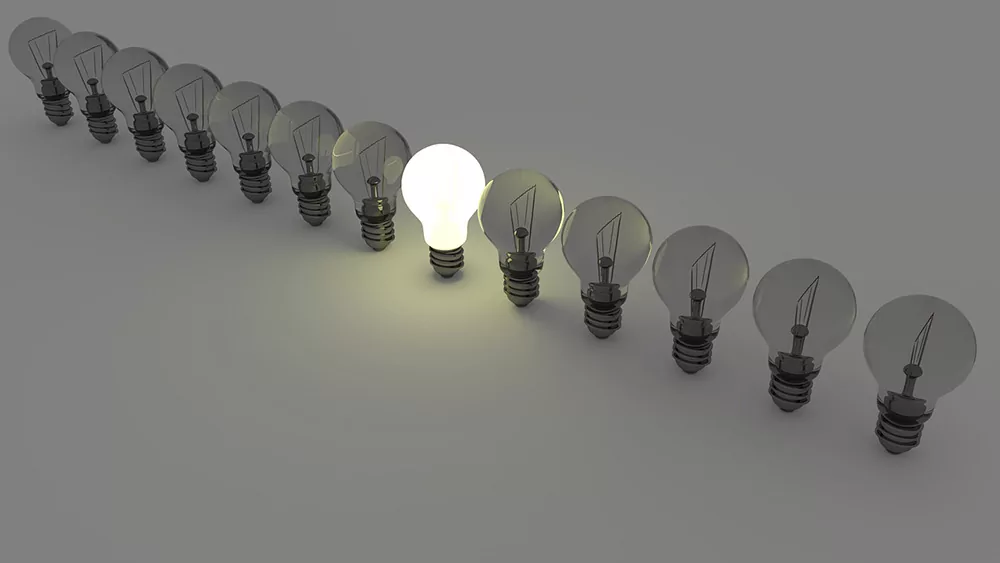
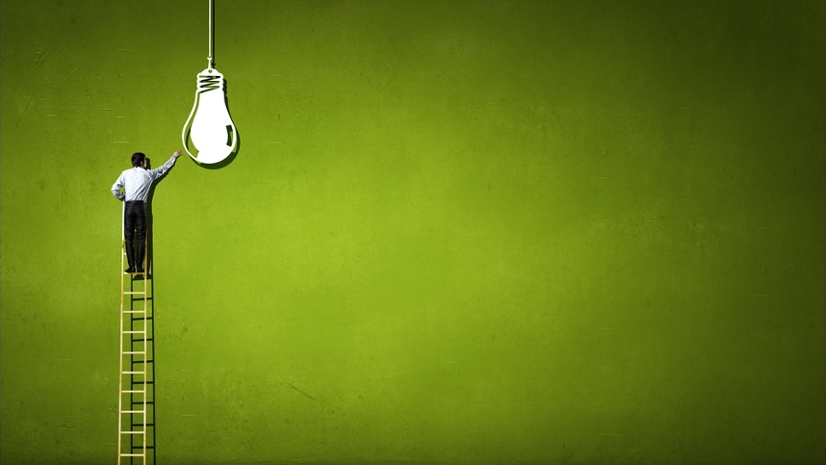
This program has been widely popular over the years, and contractors to property managers in Chicagoland have replaced a ton of lighting to LED via this simple program for ComEd rebates. Here are a few highlights for 2018.
LED Tubes
LED Tubes are by far the most popular product in this program. This program supports Type A and Type B tubes, which I’ll describe below. If you are interested in Type C Tubes (new LED driver included), then you’ll need to participate in the Small Business Offering or Standard Energy Savings programs.
- Type A – Type A tube replacements have a $4 instant incentive and usually cost between $6 and $10 without a rebate. This type of tube is designed to be used with an existing electronic ballast, so really you are just removing a T8 fluorescent lamp and installing a 10-17 watt Tubular LED product. Our preference these days is a 4000k 13W Philips LED tube for office settings, or a 16.5 W HO 5000k Philips LED tube for warehouse or manufacturing settings. Both are eligible for the $4 instant discount. Note that T5 Type A lamps have a $5 Instant Discount.
- Type B – Type B tube replacements also have a $4 instant incentive, and usually cost between $6 and $10 as well. The advantage of this style is that the hot and neutral wires are directly wired to the sockets of the fixture, so there is no need for an external ballast or driver. While this keeps material costs down, it does create a bit more labor costs than a Type A. For this reason, we typically recommend Type A through the instant incentive program.
Screw in LED Lamps
Screw in lamps (PARs, MRs, BRs, G25s) have been the base of much of the savings in the energy efficiency world for the past 10 years. Today, while a lot of our marketplace are LEDs, there is still a lot of work to be done. If you have any of these lamps not converted to LED in your commercial setting, these are among the best ROIs available and are low hanging fruit. In fact, property management groups can save almost $5 per year by replacing a 13 watt CFL with a 9 Watt LED A lamp, and this is prevalent throughout a lot of multifamily buildings in Illinois.
- Par16 and Par20 – $6 off
- Par30 – $8 off
- Par38 – $10 off
- Mr16 – $3 off
- Decorative (B12, B11, candle bulbs) – $3 off
- Directional Reflector lamps (BR30, R20, Br40) – $4 off
Already sounding good to you? Shoot us an email to ask for pricing and quantities.
Trim Kits
We absolutely love trim kits at Verde – they are very versatile and really improve the quality of light that comes out of a fixture. Trim kits typically replace a Br30 or the ever challenging PTL fluorescent lamps. They are typically a bit labor intensive, and while there are energy savings, this is more about upgrading the look and feel of spaces. The instant incentive for this fixture is currently $10, an increase from previous years and one of our most successful products.
Exit Signs
Exit Signs are a great opportunity for energy efficiency, and as this former firefighter can attest, an important consideration for your building. Current LED products last up to 100,000 hours, which can avoid fines and safety concerns with exits being improperly lit.
- Screw in LEDs (white and red lamps) are available with a $5 per lamp rebate
- Hardwired LED replacements are also available with a $20 per lamp rebate. Labor is often higher with this replacement, but it is required in signs where there are currently PTL style lamps.
New to 2020 – HID LED Products
This year, ComEd has begun providing incentives for “corn cob LEDs” or HID replacements. While this product can be challenging to use at times to get a good light output, it is versatile and good for many applications.
- Mogul Base (E39) over 100 watts – $55 rebate / lamp
- Mogul Base (E39) less than 100 watts – $25 rebate /lamp
- Standard Base (E26) – $20 rebate /lamp
Wall Packs/Fixtures
- $12/fixture under 50 watts
- $20/fixture 50 to 99 watts
- $50/fixture over 100 watts
- $10/fixtures for Energy Star fixtures less than 40 Watts
- $25/fixture for Energy Star fixtures greater than 40 Watts
Pin Based LED
- $5 per lamp for 4 Pin-base LED
- $5 per lamp for 2 Pin-base LED
HVAC
Brand new to 2020 is an instant discount on high efficiency commercial RTU equipment. While not as significant as Small Business Offering incentives, it is an easier way to get new equipment at a discounted price.
Please reach out with any questions, and as Verde Energy Efficiency Experts is a 2018 Instant Discounts Distributor – we are happy to help you with any product purchases. Come pick up lamps at our warehouse today, or better yet, enjoy a free site visit from our energy efficiency analysts to make sure your product color temperature and wattage selection is right from the get go.
Your Trade Ally is Your Partner

In the ComEd Energy Efficiency Program, there are a variety of players that make up the huge machine that delivers rebates and incentives to customers.
In my opinion, the most important player in the rebate game is the trade ally. A “Trade Ally” is a partner that communicates the efficiency program to the customer. In this case, we are talking about commercial customers, so businesses that use electricity and are eligible for rebates when they reduce energy.

The most restricted program is the Small Business Program, which is a closed network of Trade Allies. This means that any electrical contractor cannot just participate in the program – they need to respond to an RFP and be picked through a competitive bidding process. The benefits of working with these trade allies are higher incentives and a higher expected level of customer service. Verde has been a proud partner and trade ally in the Small Business Program since their 5th program year – please let us know if we can meet you for a free energy efficiency assessment.
<class=”hs-cta-wrapper” id=”hs-cta-wrapper-5c13cbcf-6481-4b92-94d4-2b09f9ba0df3″>< class=”hs-cta-node hs-cta-5c13cbcf-6481-4b92-94d4-2b09f9ba0df3″ id=”hs-cta-5c13cbcf-6481-4b92-94d4-2b09f9ba0df3″ style=”visibility: visible;” data-hs-drop=”true”>Schedule an Energy Assessment </class=”hs-cta-wrapper”>
The Instant Discount program also has a selected group of distributors that can offer their rebates and is not available to all companies. Verde is fortunate to be a distributor in the Instant Discount Program.
The Standard Program is open to all Trade allies that meet a minimum level of training in the energy efficiency program.
The Multi-Family Energy Savings program also has a closed network of trade allies, which are carefully screened for those that can work in common areas of multi-family buildings. Verde enjoyed participating in this pilot program in 2017, and have great hopes for the savings that can be found in 24-hour common areas. This program provides rebates in conjunction with People’s Gas and North Shore Gas Rebates and requires access to in unit improvement in lighting and reduced water usage.
The best part of the way this utility program operates is that if you don’t find a good fit with one particular trade ally, you can always reach out to more. There are lists throughout the program web information, or you can call and ask for a referral from ComEd at 1-855-433-2700.
Energy Efficiency Jobs in Illinois
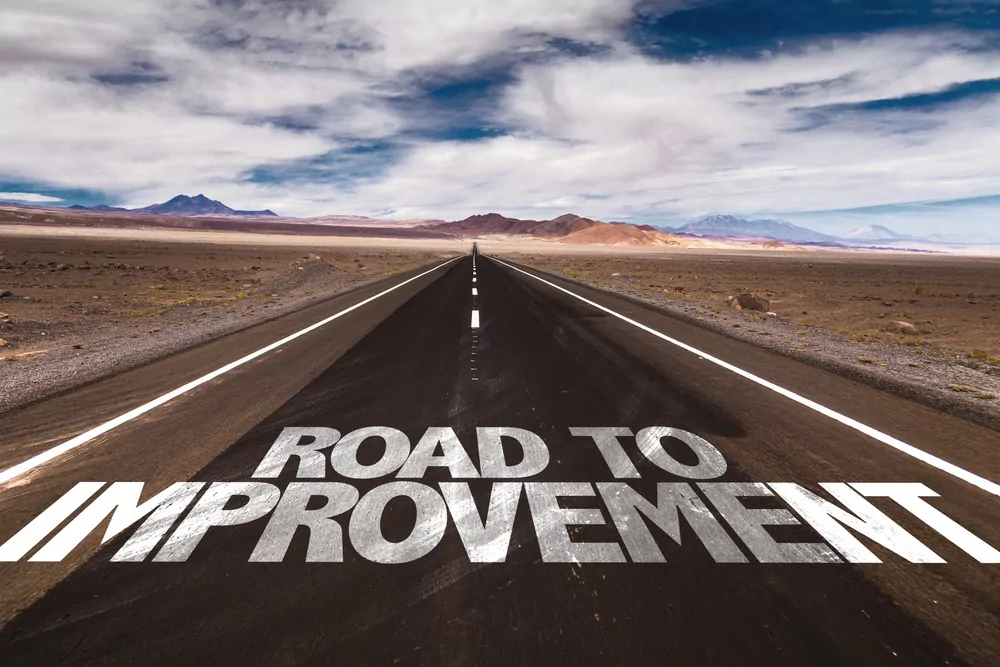
In 2016, our legislature did the impossible in Illinois – they passed a meaningful law.To show how remarkable this is, at that time, Governor Rauner and the legislature had been in a budget stalemate for two years.This law passing required a compromise between a huge utility monopoly, a democratically controlled legislature, and a republic governor.
This law, commonly referred to as the Future Energy Jobs Act, provides the architecture for the ComEd Energy Efficiency Program in Illinois. It was a strengthening of an existing energy efficiency law in Illinois, which was passed in 2007. The FEJA act not only improved the state of energy efficiency in our state, but it also went further to include renewable energy (solar PV production).
How did this law pass at such a time of indignation and fighting in our state?There were two key words – jobs and nuclear.
Jobs
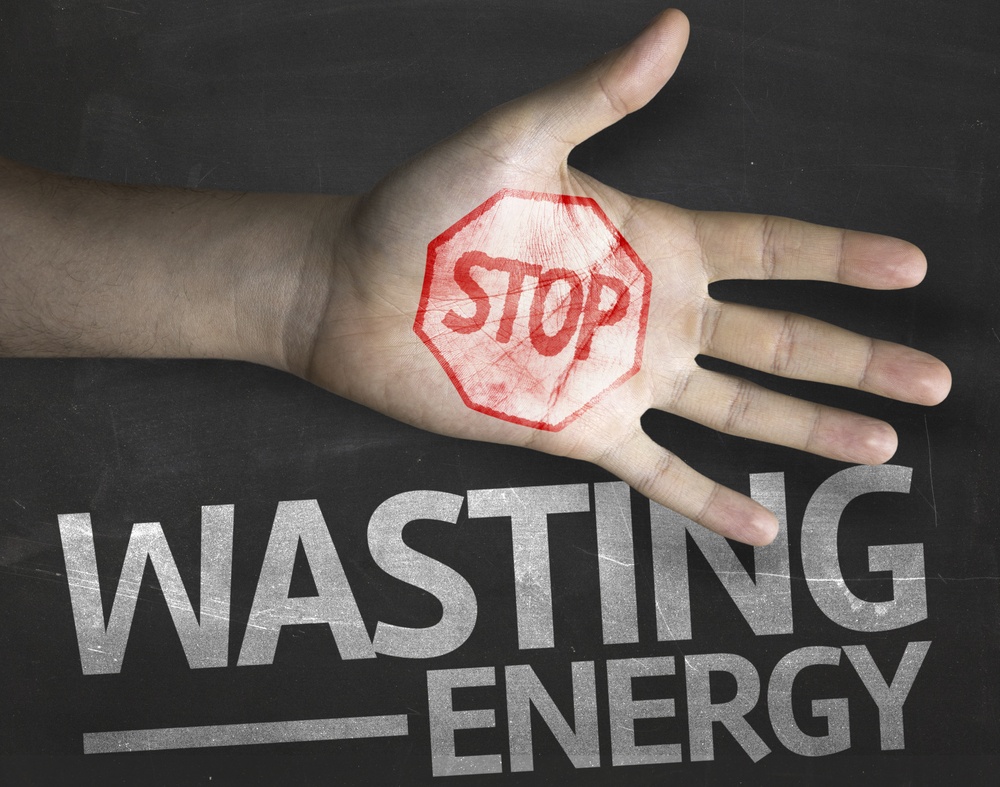
Nuclear Power
Illinois has long produced a higher percentage of their power from nuclear energy than a majority of states, with almost 60% of electricity coming from Nuclear power plants in Illinois.While this source of electricity creates no carbon, there is some large debate about the environmental impact of nuclear power.
Exelon is the parent company of ComEd, our local utility monopoly in northern Illinois.Exelon has long had an aggressive nuclear portfolio and recently has had financial constraints after the US has failed to address a carbon tax or cap and trade legislation as expected.Exelon had been seeking financial support from the state to keep two nuclear power plants open, and this law was the opportunity to negotiate those terms.
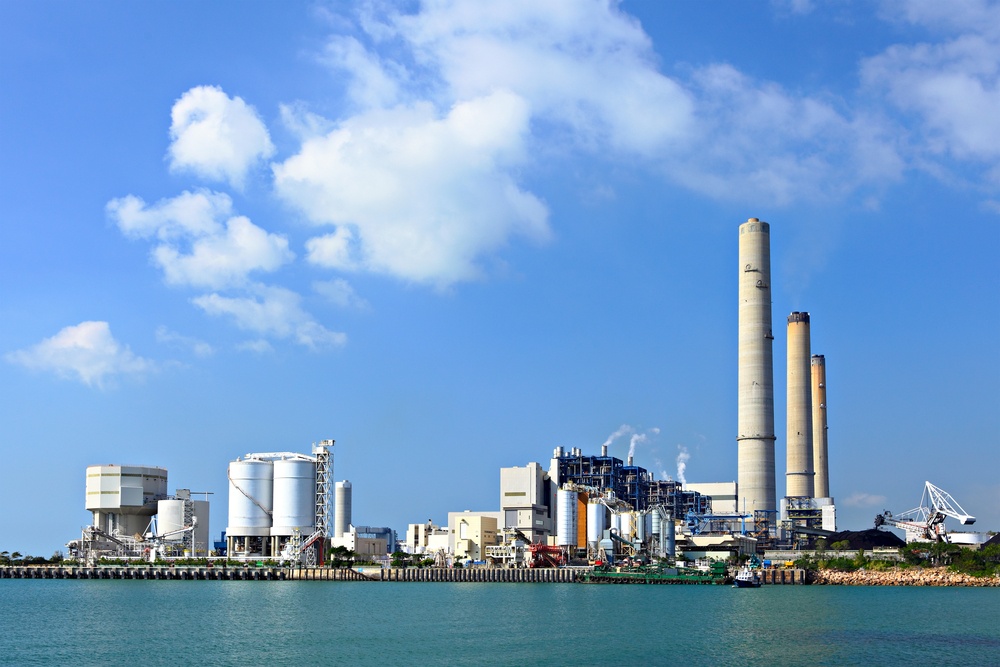
The law increased the already $240,000,000 of annual spending by ComEd in 2017 to $1.4 billion over 3 years from 2018 to 2020.On top of that, there is a minimum of $180,000,000 of spending for renewable energy – strengthening and hopefully fixing our existing renewable power standards.
With any compromise – it isn’t perfect.However, I was personally surprised when this law passed and I feel that nuclear power is an important part of curbing climate change. If electric vehicles continue to penetrate the marketplace, we will need consistent nighttime energy production to charge those batteries, and maximizing existing power plants that do not release carbon is a great plan.In addition, the technology to offset usage to lower cost and lower usage times of day will continue to develop and nuclear power helps support those.
Did you know that Illinois has real-time pricing for residential electricity?Check out more information and sign up at ComEd Real Time Pricing.I’ve used it for about 2 years and have saved around 10% compared to normal pricing by doing simple changes like running the dishwasher and washing machine at night, as well as setting back the AC during surge pricing.
Business Energy Efficiency – Large Facilities
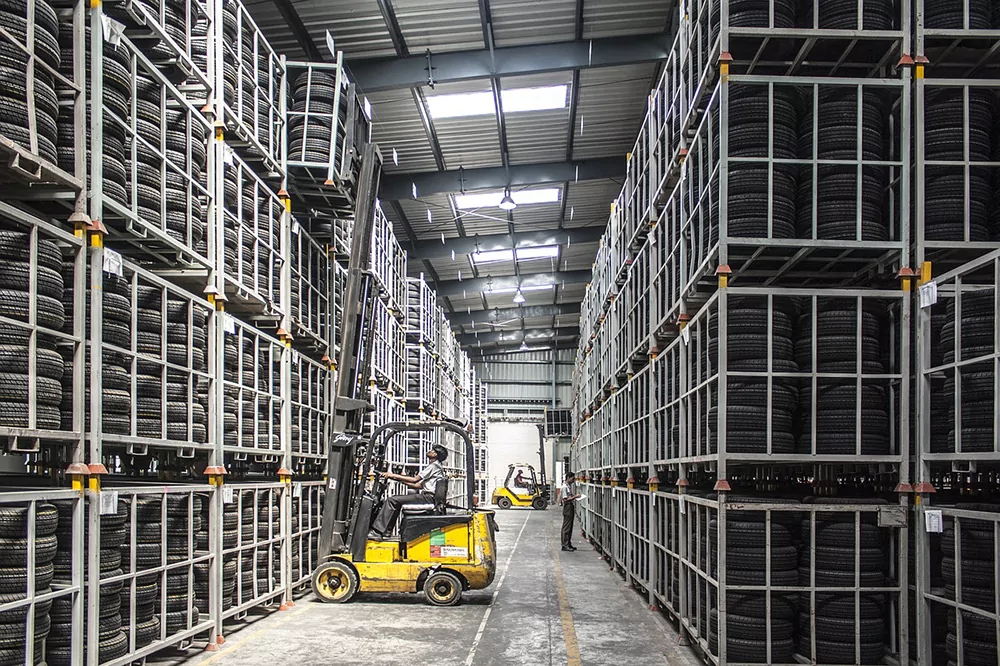
Commercial energy efficiency improvements are a core pillar of the ComEd Energy Efficiency Program in Illinois. All businesses and public sector programs are available to participate in the Standard Program for energy efficiency program.
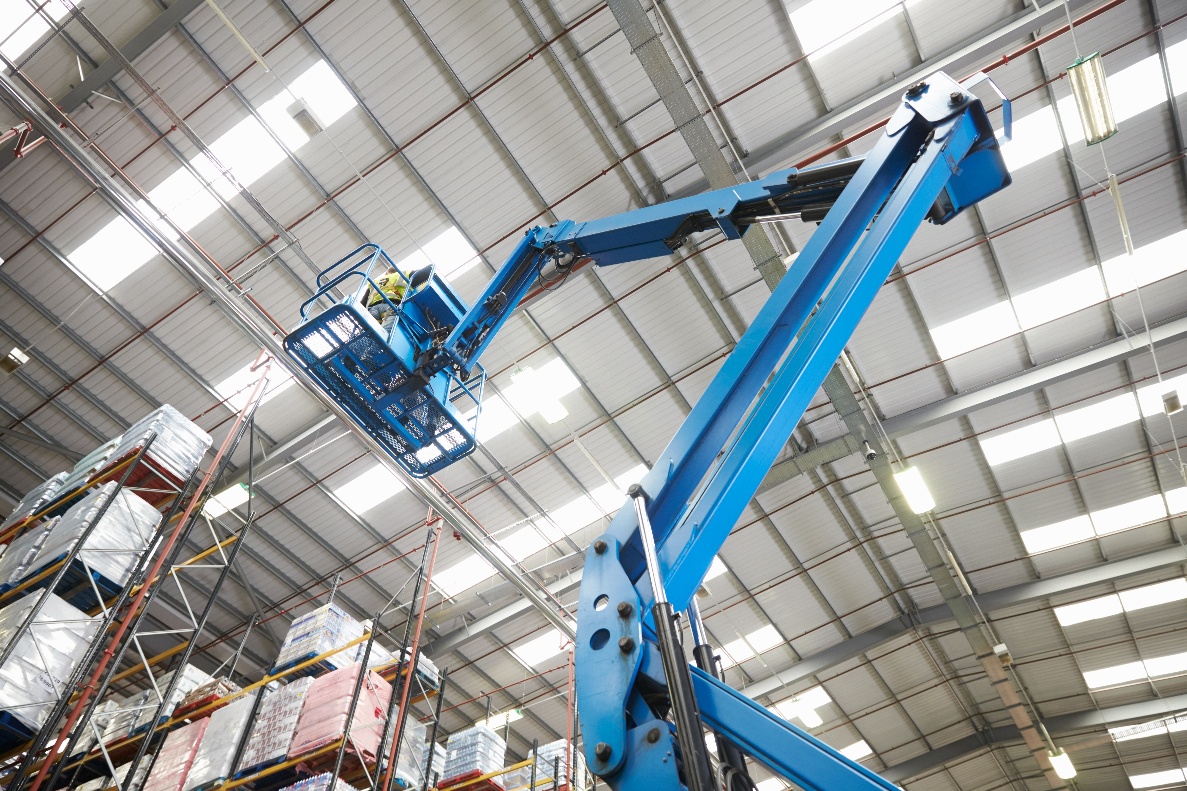
The Standard program is very versatile and does not require the usage of an ICC Certified Trade Ally to install the product. However, it might be helpful to purchase your products through an Instant Discount distributor such as Verde Energy Efficiency Experts to make sure the products you are installing are Design Light Consortium approved, as are often required for the incentives.
This program’s incentives, while lower than those targeting smaller facilities, are targeted toward larger facilities that often have a dedicated person to maintain supervision and staff on hand to replace lighting fixtures and advanced controls.
2020 Highlights of the Program include:
Lighting
- $.50 per watt reduced incentives for LED lighting, including Type C Tube and Driver installation
- $ .18 per watt controlled daylighting plus occupancy controlled sensors
- Made in Illinois bonus of 10% on any fixture that is at least 50% manufactured and/or assembled in Illinois
- Opportunities for higher incentives for advanced lighting controls scenarios
Refrigeration
- $4 incentive per square foot walk-in cooler and freezer strip curtains
- $60 incentive per EC Motor installed in walk-in cooler and freezers
- $90 incentive per EC Motor installed with evaporative fan speed controls for walk-in cooler and freezers
- $100 incentive per beverage machine controls
HVAC
- $50 per ton of new rooftop HVAC unit installed
- $50 per ton controlled of economizer installed
- $10 per bathroom exhaust fan sensor installed
- $40-$75 per HP controlled Variable Speed Fan
Compressed Air
- $20 incentive per high-efficiency air nozzle
- $100 incentive per no loss condensate drain
- $75 per HP – Integrated VSD on a new air compressor
Want to know your specific eligibility and where you can save energy? Hit us up and schedule a free energy efficiency walkthrough, which will share a customized report with all of your eligible ComEd rebates.
ComEd Energy Efficiency Program and Smart Ideas
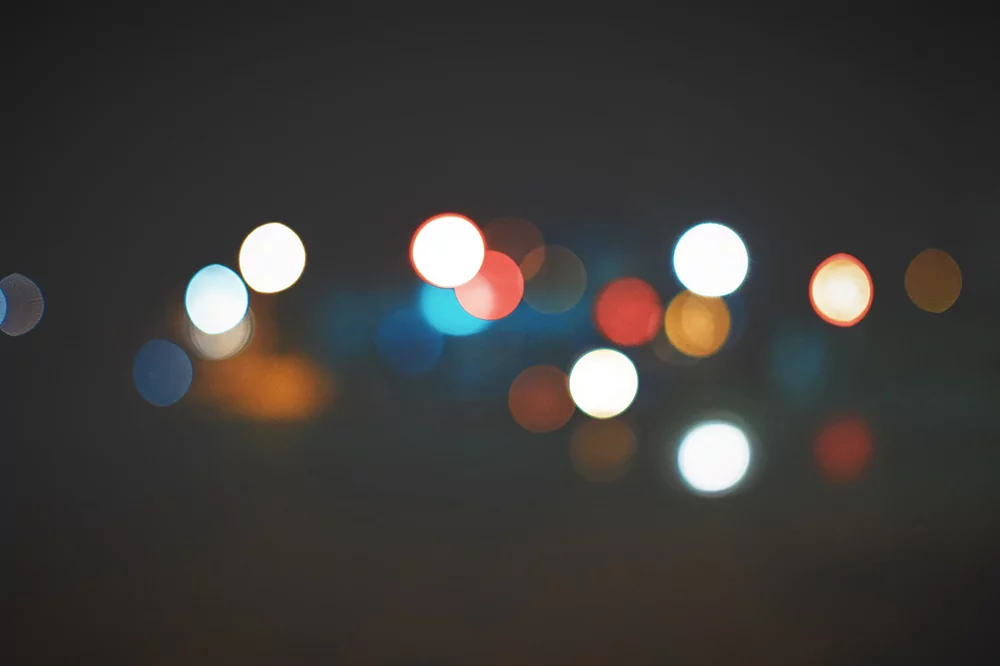
In 2007, Illinois passed a law to tax customers and spend that taxation on energy efficiency. ComEd, People’s Gas, Northshore Gas, and Nicor Gas all spent incentive and rebate money out of the tax collected on each utility bill. This spending ultimately reducing energy usage with each tax dollar spent. This program through the electric utility was branded the ComEd Smart Ideas Program. Now referred to as the Comed Energy Efficiency Program
How to ComEd Smart Ideas Energy Efficiency Program Came to Be
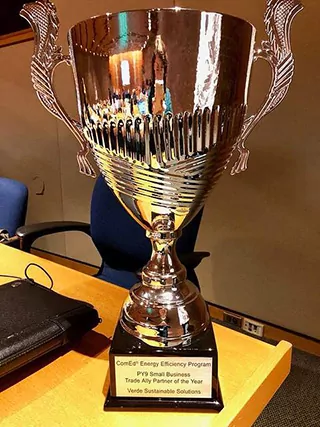
In December 2016, Illinois doubled down on this successful ComEd energy efficiency program and increased this spending to almost $400 million annually. This law is commonly referred to as the Future Energy Jobs Act. This law was passed by an unlikely coalition in Illinois – Exelon (ComEd’s parent company), environmentalists, groups focused on job growth (including Governor Rauner), as well as other small groups.
Job growth in Illinois due to this ComEd rebate program is significant, including Verde in Chicago. All of our team of Chicago energy efficiency experts have jobs from this spending. A significant amount of our revenue is generated by partnering with ComEd on various programs for business. In fact, not to braggadocious but we were awarded the 2017 ComEd Trade Ally Partner of the Year award recently.
Different Types of ComEd Rebates in Illinois
There are a variety of ComEd rebate programs, including those for businesses and residential. Business energy efficiency rebates focus on LED lighting, and refrigeration improvements (including EC Motors with Evaporative Fan Speed Controls), HVAC, smart thermostats, and compressed air measures. The ComEd Smart Ideas energy efficiency program and incentives help reduce the cost to upgrade to energy efficiency measures. The rebates cover 50-75% of the cost of upgrades. Up to 100% of the cost for some items are possible for businesses classified as 0-100kW in their usage.
Residential rebates include free energy audits, refrigeration recycling programs, and smart thermostat discounts. There are additional incentives, such as new appliance incentives. There is also a marketplace to purchase reduced price LEDs and Smart Thermostats available to ComEd residential customers.
Why You Should Get an Assessment for the ComEd Energy Efficiency Program
ComEd spends this money because it is required by law. However, they do support this program fairly enthusiastically because of the goodwill generated for their customers through this program. Since we all pay into this tax program, if you do not participate, you are funding your neighbor’s energy efficiency. In fact, if you operate a business, you are funding improvements to your competition. So please reach out to us today for a free energy efficiency assessment.

